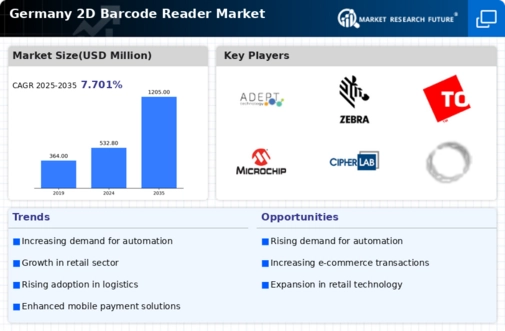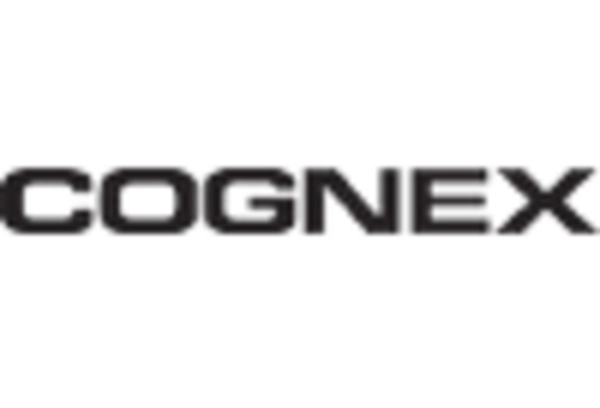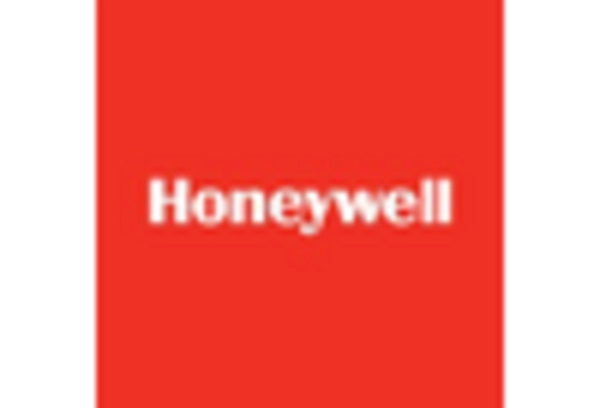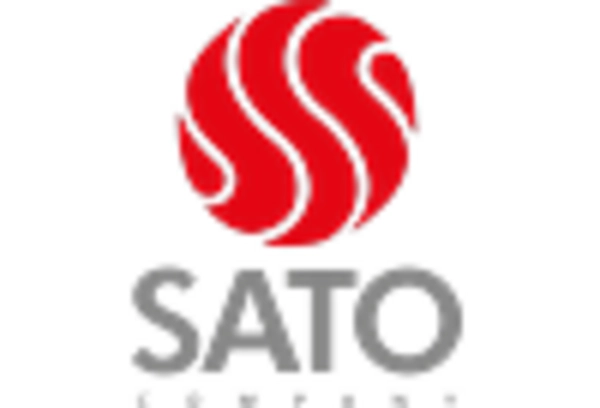Growth of E-commerce
The rapid expansion of the e-commerce sector in Germany is significantly impacting the 2d barcode-reader market. As online shopping continues to gain traction, businesses are increasingly relying on efficient inventory management and order fulfillment processes. 2d barcode readers facilitate accurate tracking of products throughout the supply chain, ensuring timely deliveries and reducing errors. In 2025, e-commerce sales in Germany are expected to reach approximately €100 billion, highlighting the need for effective scanning solutions. This growth presents a substantial opportunity for the 2d barcode-reader market, as retailers and logistics companies invest in technology to enhance their operational capabilities. The ability to quickly and accurately scan items not only improves customer satisfaction but also optimizes warehouse management, making 2d barcode readers an essential tool in the evolving e-commerce landscape.
Rising Demand for Automation
The increasing demand for automation across various sectors in Germany is driving the 2d barcode-reader market. Industries such as retail, logistics, and manufacturing are adopting automated solutions to enhance operational efficiency. The integration of 2d barcode readers into automated systems allows for faster data capture and processing, which is crucial in high-volume environments. According to recent data, the automation market in Germany is projected to grow at a CAGR of 8.5% from 2025 to 2030. This trend indicates a robust potential for the 2d barcode-reader market, as businesses seek to streamline their operations and reduce human error. The ability to quickly scan and process items using 2d barcode technology aligns with the broader push towards Industry 4.0, further solidifying its relevance in the automation landscape.
Regulatory Compliance Requirements
The stringent regulatory compliance requirements in Germany are influencing the 2d barcode-reader market. Various industries, including pharmaceuticals and food and beverage, are mandated to adhere to strict tracking and traceability standards. 2d barcode readers play a crucial role in ensuring compliance by providing accurate and reliable data capture. As regulations evolve, businesses are compelled to invest in technologies that facilitate adherence to these standards. The market for compliance-related technologies is expected to grow by 10% in the coming years, indicating a rising demand for 2d barcode readers. This trend underscores the importance of accurate data collection and reporting, positioning 2d barcode readers as essential tools for companies striving to meet regulatory obligations while maintaining operational efficiency.
Technological Integration in Retail
The ongoing technological integration within the retail sector is a significant driver for the 2d barcode-reader market in Germany. Retailers are increasingly adopting advanced technologies to enhance customer experiences and streamline operations. The integration of 2d barcode readers with point-of-sale systems and inventory management software allows for seamless transactions and efficient stock management. In 2025, the retail technology market in Germany is projected to grow by 15%, reflecting the increasing reliance on innovative solutions. This growth indicates a strong potential for the 2d barcode-reader market, as retailers seek to leverage technology to improve operational efficiency and customer satisfaction. The ability to quickly scan products not only expedites the checkout process but also enhances inventory accuracy, making 2d barcode readers indispensable in the modern retail environment.
Increased Focus on Inventory Management
The heightened emphasis on inventory management in various sectors is propelling the 2d barcode-reader market in Germany. Companies are recognizing the importance of maintaining accurate inventory levels to meet customer demands and minimize costs. 2d barcode readers provide real-time data on stock levels, enabling businesses to make informed decisions regarding restocking and order fulfillment. In 2025, the inventory management software market in Germany is projected to grow by 12%, indicating a parallel increase in the demand for scanning technologies. This trend suggests that as businesses invest in sophisticated inventory management systems, the integration of 2d barcode readers will become increasingly prevalent. The ability to efficiently track and manage inventory not only enhances operational efficiency but also contributes to improved profitability, making it a key driver for the 2d barcode-reader market.

















Leave a Comment